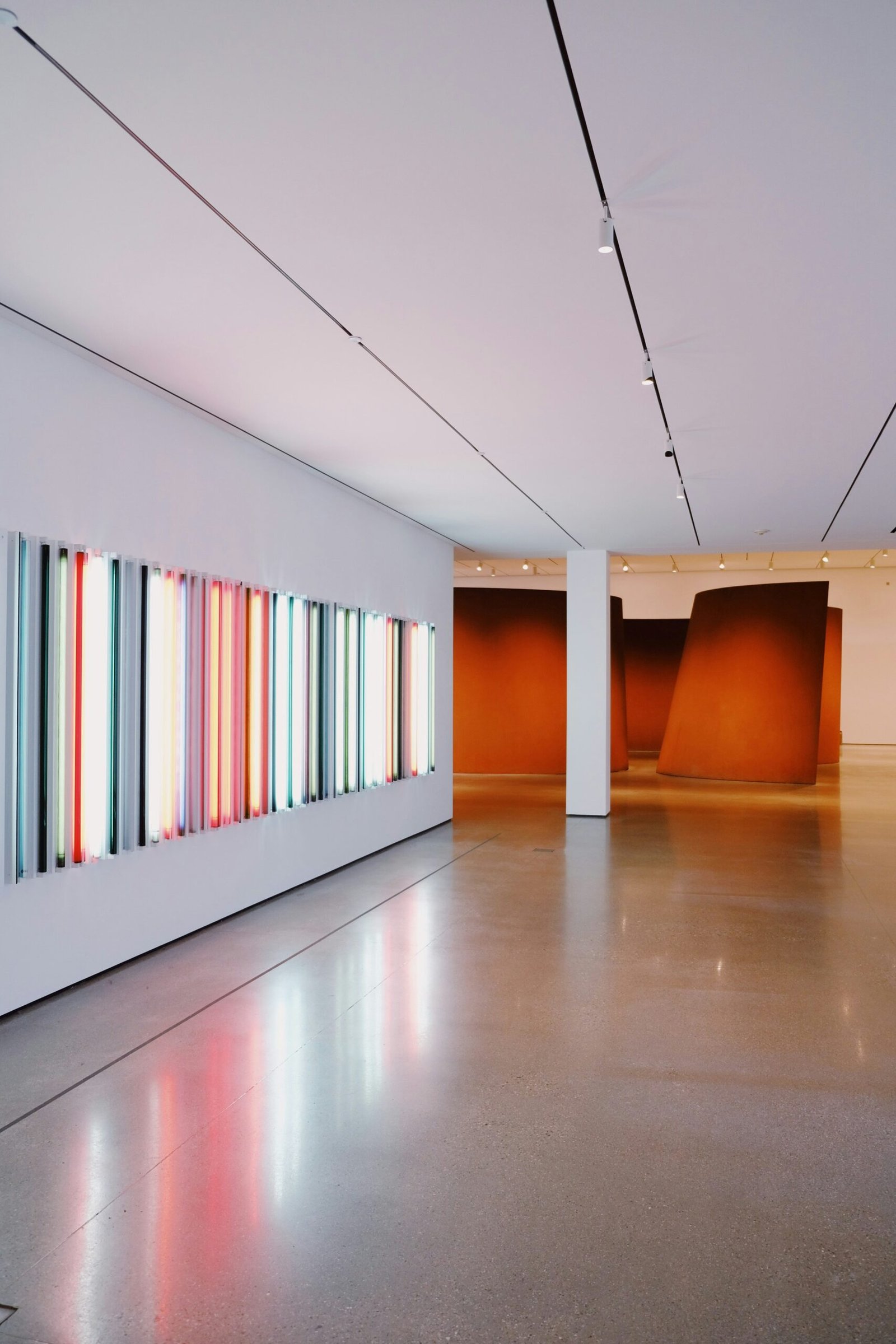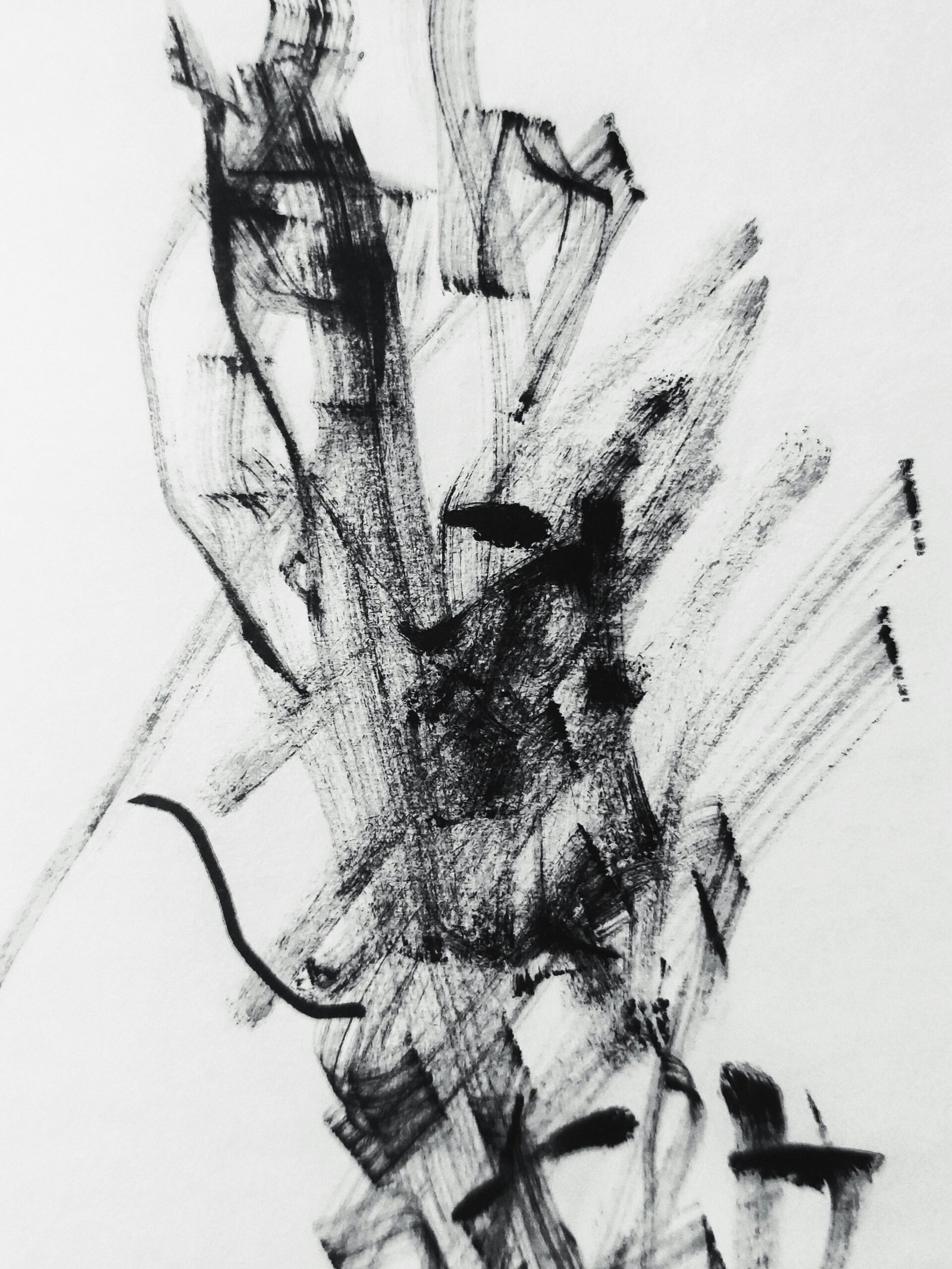Experience the illuminating art of Jenny Holzer as she shines new light in dark places. With her career-spanning exhibition, “Light Line,” at the Guggenheim Museum, Holzer explores the changes in political language and its delivery over the past few decades. From her iconic electronic text installations to her more recent non-electronic works, Holzer’s art encompasses a range of powerful messages that tackle issues of justice, democracy, and global conflict. As you delve into her art, you will be captivated by her thought-provoking words and the ways in which she challenges societal norms. So step into the world of Jenny Holzer and allow her art to illuminate the darkness within.

Jenny Holzer’s Background and Career
Early Life and Education
Jenny Holzer was born in the mid-20th century in the American Midwest. She grew up with a strong artistic inclination and eventually pursued a Bachelor of Fine Arts degree in painting and printmaking at Ohio University. Holzer then went on to complete her Master of Fine Arts degree in painting at the Rhode Island School of Design. This early education in traditional visual arts laid the foundation for her later innovative use of language as a medium.
Emergence of Holzer’s Artistic Style
Holzer’s artistic career began to take shape in the late 1970s and early 1980s when she began experimenting with language as a medium in her artwork. She was influenced by the Conceptual art movement of the time and the political and social climate of post-Watergate America. Holzer’s early works often addressed themes of power, injustice, and societal norms, and she used short, provocative phrases displayed on electronic signboards to convey her messages.
The Role of Language in Holzer’s Work
Language plays a central role in Holzer’s artwork. She uses words and phrases as a means of communication and social critique. Holzer’s use of language breaks down traditional barriers between art and text, blurring the lines between visual and written expression. By placing her messages in public spaces, she challenges viewers to engage with and critically reflect upon the meaning and implications of the language she presents.
The Guggenheim Exhibition
Overview of the Exhibition
The Guggenheim exhibition, titled “Light Line,” showcases Jenny Holzer’s career-spanning works and includes a newly updated LED sign installation. The exhibition provides viewers with an opportunity to witness the evolution of Holzer’s artistic style and the changes in political language she addresses in her work. It offers a comprehensive overview of her use of language as a medium and the powerful impact of her installations.
Highlights of the Installation
One of the highlights of the exhibition is the LED sign installation, which is a central feature of Holzer’s art. The sign displays a selection of her texts from different time periods, capturing the evolution of her ideas and themes. The phrases displayed on the LED sign range from thought-provoking statements about power and justice to ironic observations on societal norms. The installation creates an immersive environment that invites viewers to engage with the messages being presented.
The Significance of the LED Sign
The LED sign is an iconic element of Holzer’s work and has become synonymous with her artistic style. It revolutionized the way language-based art is presented, predating modern news “crawls” by a decade. By utilizing the LED sign, Holzer effectively brings her messages to the forefront of public consciousness, capturing the attention of passersby and challenging them to confront societal issues. The LED sign’s ability to display texts quickly and with impact enhances the immediacy and accessibility of Holzer’s art.
Changes in Political Language
One of the key aspects of Holzer’s work showcased in the exhibition is her exploration of changes in political language over time. By presenting her texts from different periods, Holzer invites viewers to reflect on shifts in rhetoric, power dynamics, and societal values. Her art serves as a commentary on the ways in which language can be manipulated and the impact of such manipulation on society.
Holzer’s Advice to Viewers
Throughout her career, Holzer has encouraged viewers to actively engage with her art. Her advice remains the same: just read the art. By focusing on the words and phrases presented in her installations, viewers can delve into the deeper meanings and social critiques embedded within the language. Holzer encourages viewers to question, challenge, and reflect on the messages she presents, fostering a sense of critical engagement.

The Evolution of Holzer’s Art
Holzer’s Early Works
Holzer’s early works laid the foundation for the innovative use of language and electronic mediums that define her artistic style. During this period, she began to explore themes of power, injustice, and societal norms, using short and provocative phrases displayed on electronic signboards. These early works established Holzer’s reputation as a thought-provoking artist who pushed the boundaries of traditional artistic expression.
The Influence of Political Context
The political context in which Holzer emerged as an artist greatly influenced the themes and subjects she addressed in her work. Living in post-Watergate America, Holzer witnessed a society grappling with issues of power, corruption, and social injustice. These themes became integral to her art and provided the impetus for her exploration of language as a means of social and political critique.
Shifts in Holzer’s Subject Matter
Over the course of her career, Holzer’s subject matter evolved alongside shifts in societal and political landscapes. In her early works, she focused on broad themes of power and injustice. However, as the world changed, her art began to explore more specific issues, such as governmental malfeasance, political conflict, and threats to democracy. Through her texts, Holzer offers viewers an insight into the evolving challenges faced by society.
Exploring Dark and Challenging Themes
Holzer’s art is known for its exploration of dark and challenging themes. She fearlessly addresses topics such as incarceration, governmental corruption, and lethal conflict. Despite the often somber nature of these themes, Holzer’s approach remains thought-provoking and, at times, even imperturbably chipper. By shining a light on these difficult subjects, Holzer encourages viewers to confront harsh realities and engage in meaningful dialogue.
Holzer’s Motivating Questions and Themes
Representing Lethal Conflict
One of the defining questions that drives Holzer’s artwork is how to represent lethal conflict. Her art explores the visual and textual representation of violence, both within the United States and on a global scale. By presenting the realities of conflict through her texts, Holzer pushes viewers to confront the devastation caused by violence and consider its implications.
Threats to Democracy
A recurring theme throughout Holzer’s career is the exploration of threats to democracy. Through her texts, she critically examines the erosion of democratic values, highlighting the dangers of authoritarianism, corruption, and the abuse of power. Holzer’s art encourages viewers to reflect on the state of democracy and their role in preserving its principles.
Incarceration and Governmental Malfeasance
Holzer’s work often addresses issues related to incarceration and governmental malfeasance. She sheds light on the injustices and abuses within the prison system and questions the ethical and moral implications of such practices. Through her texts, Holzer confronts viewers with the harsh realities of systemic oppression and the need for reform.
Holzer’s Tone and Approach to Dark Themes
Despite delving into dark and challenging themes, Holzer’s tone remains imperturbably chipper. Her approach combines a wicked gift for irony with a matter-of-fact, self-deprecating style. This unique tone allows her to engage viewers in difficult conversations and encourages them to confront uncomfortable truths with a sense of urgency and critical reflection.

The Significance of ‘Truisms’
Historical Context of ‘Truisms’
Holzer’s “Truisms” emerged in the late 1970s in the context of post-Watergate America. This period was marked by political disillusionment, financial instability, and urban decay. Against this backdrop, Holzer’s succinct, often enigmatic statements provided viewers with a critical lens through which to view societal norms and power dynamics.
Introduction of Language-Based Art
“Truisms” marked the introduction of language-based art in Holzer’s practice. This groundbreaking body of work challenged conventional notions of artistic expression by utilizing language as the primary medium. The use of short, provocative phrases on electronic signboards made her art accessible to a broader audience and brought it into public spaces.
Resistance and Commentary in ‘Truisms’
“Truisms” served as a form of resistance and commentary on societal values and authority. Holzer’s carefully crafted phrases exposed the contradictions embedded within cultural norms and urged viewers to question accepted truths. Through her art, she provided an alternative perspective and encouraged critical engagement with the world.
Impact and Legacy of ‘Truisms’
The impact of “Truisms” on contemporary art cannot be overstated. Holzer’s use of language as a medium revolutionized the field and paved the way for future artists to explore the power of words in their own work. The legacy of “Truisms” can be seen in the continued relevance of Holzer’s messages and the lasting influence she has had on feminist art and social commentary.
The Use of Electronic Signboards
Holzer’s Adoption of Electronic Medium
Holzer’s pioneering use of electronic signboards revolutionized the presentation of language-based art. By employing this medium, she was able to captivate viewers with her provocative phrases and visually engaging displays. The adoption of electronic signboards allowed Holzer to bring her art into public spaces, sparking dialogue and provoking thought among passersby.
Techniques and Effects of the Signboards
The techniques used in Holzer’s electronic signboards were designed to create an impact and convey her messages effectively. The scrolling text, often displayed too fast to read, and the intermittent flashing of the signboards created a sense of urgency and sensory overload. This technique forced viewers to engage actively with the art, sparking curiosity and encouraging further reflection.
Installation Design and Impact
Holzer’s installation design plays a crucial role in the impact of her art. By strategically placing the signboards in specific locations, she ensures maximum visibility and accessibility to viewers. The integration of the signboards into the physical environment adds another layer of meaning and invites viewers to consider the intersection of art and architecture.
The Role of Sensory Overload
Sensory overload is a deliberate aesthetic choice in Holzer’s work. The fast-paced scrolling text and intermittent flashing of the signboards create an overwhelming experience for viewers, engaging multiple senses simultaneously. This sensory overload serves to capture attention and heighten the impact of the messages being conveyed, making them difficult to ignore.
Exhibition at the Venice Biennale
Overview of the Biennale Exhibition
Holzer’s exhibition at the Venice Biennale was a significant milestone in her career. It marked the first solo exhibition by a female artist at the U.S. Pavilion and solidified Holzer’s position as a trailblazing artist. The exhibition showcased a comprehensive collection of her work, including her iconic electronic signboards.
Significance of Holzer’s Solo Exhibition
Holzer’s solo exhibition at the Venice Biennale was a testament to her talent and the impact of her art. It provided an international platform for her to communicate her messages and engage with a global audience. The exhibition shed light on the societal and political issues that Holzer addresses in her works and sparked critical dialogue among viewers.
Exploring Institutional Power
In her exhibition at the Venice Biennale, Holzer explored the theme of institutional power. Through her art, she commented on the ways in which power is wielded within systems of authority, examining its effects on individuals and society as a whole. By presenting her work in the U.S. Pavilion, Holzer challenged viewers to consider the relationship between institutional power and national identity.
Aesthetic Choices and Design
The aesthetic choices and design of Holzer’s exhibition at the Venice Biennale played a crucial role in capturing the attention of viewers. The use of mirrored surfaces and high-colored signboards created an immersive and visually striking environment. These design elements enhanced the impact of the art and allowed viewers to engage with Holzer’s messages on multiple levels.
Holzer’s Influences and Inspirations
Wislawa Szymborska and Other Poets
Holzer’s work is influenced by a variety of poets, including Wislawa Szymborska. Szymborska’s spare, heartbreaking poetry resonates with Holzer, and the inclusion of her work in Holzer’s installations adds depth and emotional resonance. By incorporating the words of poets, Holzer taps into a rich literary tradition and connects her art to broader dialogues about language and meaning.
Political and Social Movements
Political and social movements have had a significant influence on Holzer’s art. She emerged as an artist during a time of political and social upheaval in America, and these events shaped her thinking and artistic practice. Holzer’s art serves as a response to the injustices and power imbalances she witnessed, reflecting her engagement with various movements for social change.
Feminism and Feminist Art
As a female artist, Holzer is deeply influenced by feminism and feminist art. Her work addresses gender roles, inequality, and the challenges faced by women in society. By interrogating these issues through her art, Holzer adds her voice to an ongoing feminist dialogue, encouraging viewers to question and challenge patriarchal norms.
Holzer’s Midwestern Roots
Holzer’s Midwestern roots have had a lasting impact on her artistic practice. Growing up in the Midwest shaped her perspective and informed her artistic choices. The Midwestern values of plainspokenness, practicality, and self-deprecation are evident in her art, adding a distinct voice and perspective to her work.
The Impact and Legacy of Holzer’s Art
Holzer’s Influence on Contemporary Art
Jenny Holzer’s art has had a significant impact on contemporary art practices. Her pioneering use of language as a medium revolutionized the field, inspiring countless artists to explore the power of words in their own work. Holzer’s innovative approach to installation art and her ability to engage viewers on a visceral level continue to influence and inspire the next generation of artists.
Public Reception and Controversy
Holzer’s art has garnered both public acclaim and controversy. Her thought-provoking messages often challenge societal norms, leading to debates and discussions among viewers. Some may find her work unsettling or confronting, while others appreciate the opportunity for reflection and critical engagement. Regardless of the controversy, Holzer’s art has resonated with a wide range of audiences, generating meaningful dialogue about power, injustice, and social change.
Holzer’s Contributions to Feminist Art
As a female artist, Jenny Holzer has made significant contributions to feminist art. Her exploration of gender roles, inequality, and the challenges faced by women has added depth and complexity to the feminist art movement. Holzer’s art serves as a powerful tool for highlighting the experiences and perspectives of women, encouraging viewers to question and challenge patriarchal norms.
Continued Relevance of Holzer’s Messages
Despite the evolution of societal and political landscapes, Jenny Holzer’s messages remain relevant and impactful. The themes of power, injustice, and government malfeasance addressed in her art continue to resonate in contemporary society. Through her thought-provoking texts and installations, Holzer challenges viewers to critically reflect on the world and their place within it.
Conclusion
Reflection on Holzer’s Illuminating Art
Jenny Holzer’s art has consistently pushed boundaries, challenging viewers to confront uncomfortable truths and engage in critical dialogue. Through her innovative use of language, electronic signboards, and immersive installations, she shines a light on dark places and prompts us to reflect on the world in which we live.
Appreciating the Beauty in Dark Places
Holzer’s ability to address dark and challenging themes with a sense of irony and imperturbable chipperness reminds us that even in the most difficult circumstances, there is beauty to be found. Her art encourages us to confront the harsh realities of the world and appreciate the resilience and strength that can emerge from adversity.
Holzer’s Enduring Significance
Jenny Holzer’s art continues to have a lasting impact on contemporary art, feminist discourse, and social critique. Her pioneering use of language as a medium and her fearless exploration of power dynamics and injustice have paved the way for future artists to engage with important societal issues. Holzer’s messages remain urgent and relevant, serving as a call to action and a catalyst for change.







